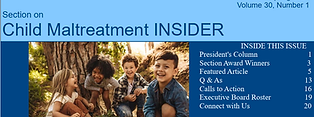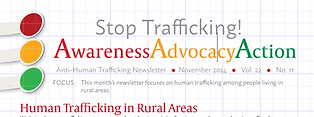

Human Trafficking is compelling someone to engage in a commercial sex act, labor or services through the use of force, fraud or coercion.
But when you talk to people who have experienced this type of victimization, they don’t see it that way. They see it as their fault. They see it as something they grew up with – it is not human trafficking, it just is. They see it as a way to get drugs. They see it as something within their family and the shame and stigma keep them from labeling it. Or they even see it as something they chose to do so they are not at someone else’s mercy. But that does not change the fact that they are a victim of human trafficking.
Recent Publications



Check out these recent submissions to SETICC's Blog:
Incorporating Trauma-Informed Care Practices into our Human Trafficking Response
Incorporating Survivor Voice into our Human Trafficking Response
“Shifting the Narrative on Familial Trafficking: It is Our Collective Responsibility.” Co-authored with Zoe Christine Bellatore. Spring 2025, Child Maltreatment Insider, Section on Child Maltreatment Society Child and Family Policy and Practice. Click on the the featured article in the Spring 2025 issue.
Check out this edition of The Alliance to End Human Trafficking on trafficking in Rural Areas. Eyes Up Appalachia is featured.
Interim Prevalence Study for Human Trafficking in Appalachian Ohio




Survivor Data
Thank you to all! As the Foundation for Appalachian Ohio’s inaugural Pillar Fellow, Christi Scott Bartman has partnered with the Ohio Network of Children’s Advocacy Centers (ONCAC) to establish baseline data on how many young people are either trafficked or at high risk of being trafficked in Appalachian Ohio. This information gathering initiative will provide a rough baseline of trafficking cases to identify potential missing populations, begin to measure prevalence of familial trafficking, assess the role drug use plays in trafficking, construct case profiles to facilitate identification of future cases, and examine what response strategies may be most effective based upon a regional needs assessment. From these insights we can together build a strong response and prevention network across Appalachian Ohio. Though not comprehensive, this initial report captured data from 79 providers and agencies across Appalachian Ohio. Based on these responses, the majority state that they could or currently do provide services to survivors of human trafficking (80%).
Offender Data






